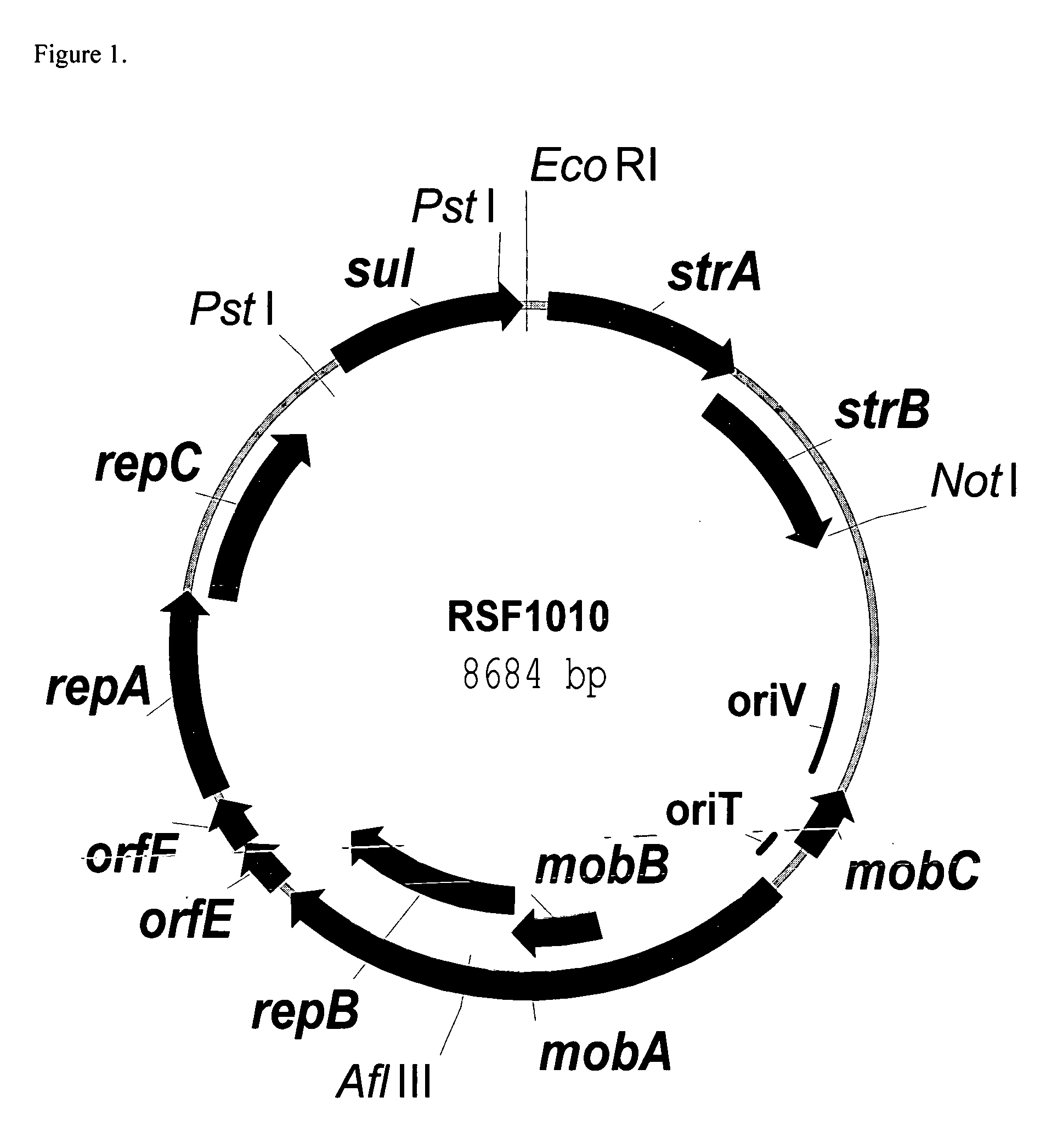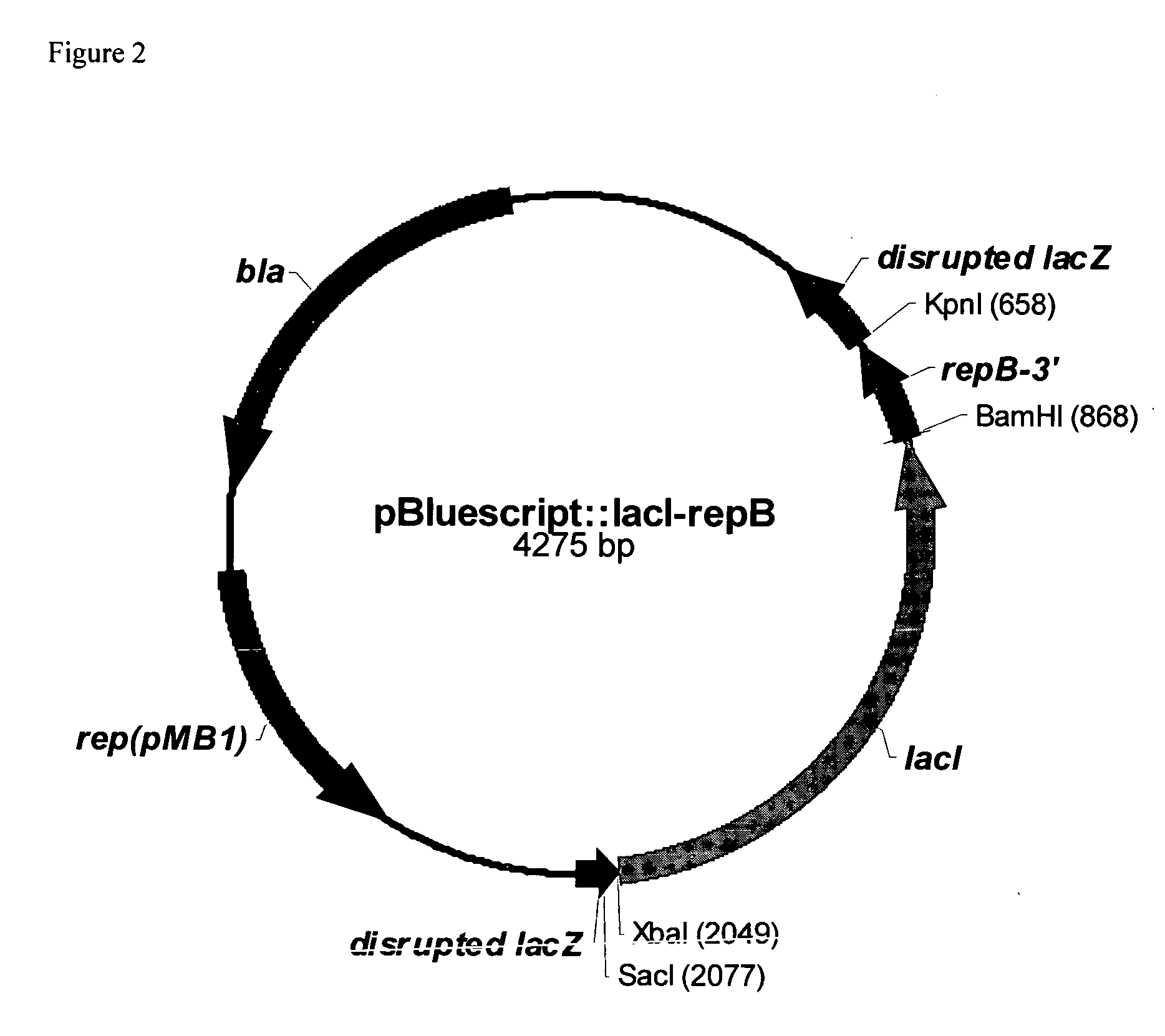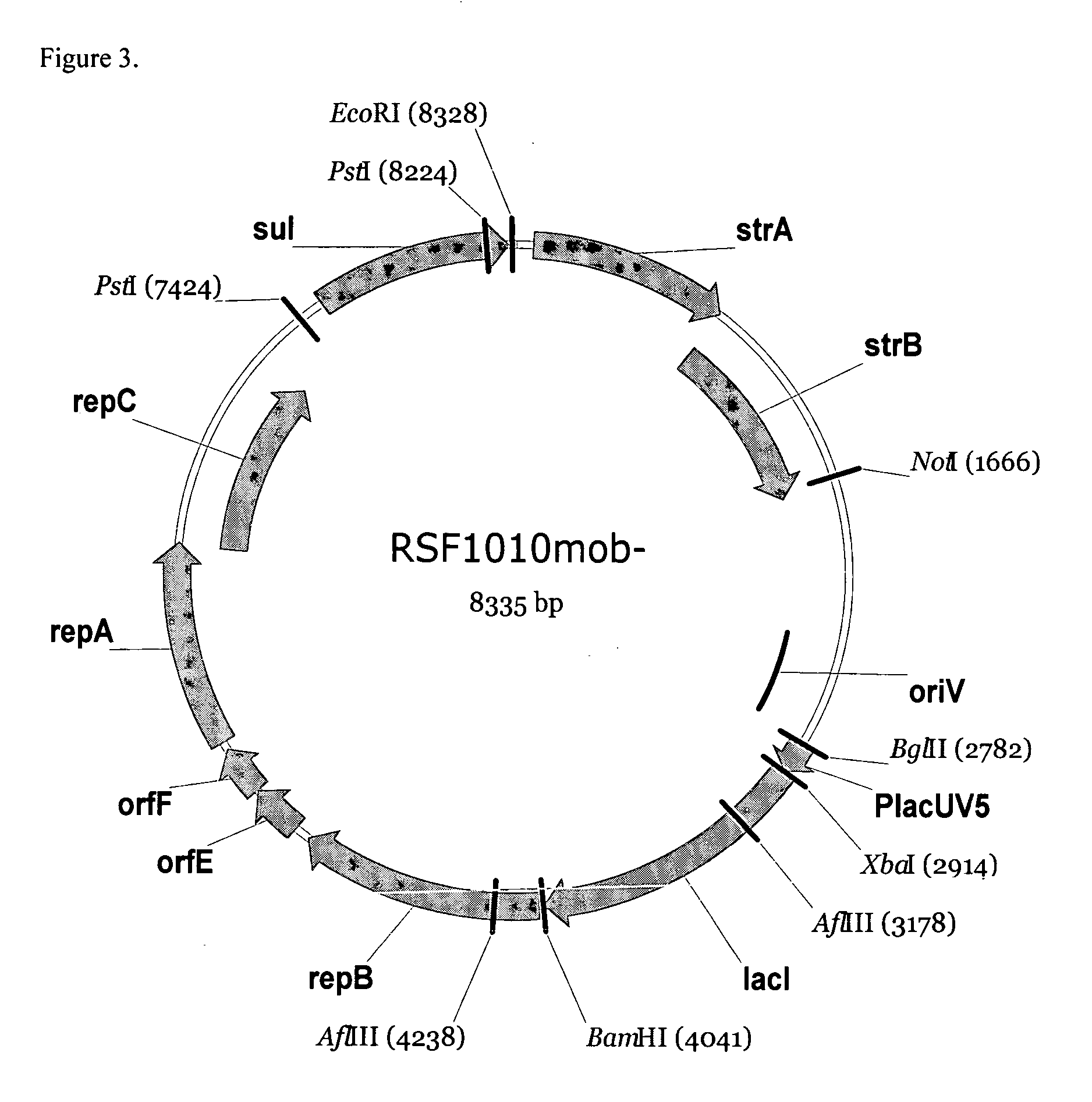RSF1010 derivative Mob' plasmid containing no antibiotic resistance gene, bacterium comprising the plasmid and method for producing useful metabolites
a plasmid and gene technology, applied in the field of mutant vectors, can solve the problems of unpredictably changing the plasmid properties, unable to identify the determinant of the stability of the plasmid, and unable to achieve functional analysis, etc., to achieve the effect of producing useful metabolites
- Summary
- Abstract
- Description
- Claims
- Application Information
AI Technical Summary
Benefits of technology
Problems solved by technology
Method used
Image
Examples
example 1
Construction of the RSF1010mob− Plasmid
[0076] Construction of the RSF1010 Mob− plasmid was performed by “Red-driven integration” (Datsenko K. A. and Wanner B. L., Proc. Natl. Acad. Sci. USA, 2000, 97:12: 6640-45) of the DNA fragment containing an auto-regulated element PlacUV5-lacI, marked by chloramphenicol resistance gene (cat gene) into the RSF1010 plasmid instead of the mob locus.
[0077] At first, a DNA fragment having a structural part of the lacI gene under control of the PlacUV5 promoter was amplified by PCR using primers P1 (SEQ ID NO: 29) and P2 (SEQ ID NO: 30) and the PMW-PlacUV5-lacI-118 plasmid (Skorokhodova, A. Y. et al, Biotechnologiya (rus), No.5, (2004)) as a template. The nucleotide sequence of PlacUV5 promoter is disclosed in Genbank Accession No.Y00412 (nucleotides 7-100). The nucleotide sequence of lacI is disclosed in Genbank Accession No. NP—414879. Furthermore, the nucleotide sequence of PlacUV5 promoter used in the present invention is described in SEQ ID NO...
example 2
Construction of the mob− Derivative of RSF1010 Plasmid having Increased Copy Number
[0087] According to our data, in the stationary phase the RSF1010mob− had the same copy number as RSF1010. In logarithmic growth phase the copy number of the obtained derivative was about two times lower than the copy number of RSF1010 plasmid. The addition of IPTG to cultivation medium caused an increase of the copy number of RSF1010mob− plasmid in the logarithmic growth phase because repB gene involved in replication of RSF-like plasmids is placed under transcriptional control of PlacUV5-lacI auto-regulated element. So, it was proposed that elimination of the lacI gene from RSF1010mob− plasmid could increase the copy number of the plasmid. Corresponding derivative of RSF1010mob− without the lacI gene was obtained by excision of lacI gene from RSF1010mob− plasmid using XbaI and BamHI restrictases. Then sticky ends of resulting DNA fragment were blunted and RSF1010mob−, lacI− plasmid was obtained by ...
example 3
Construction of the RSF1010 Mob− Plasmid Lacking any Antibiotic Resistance Genes and Containing the thyA Gene as a Selection Marker
[0089] At first, two strains were constructed on the basis of wild-type E. coli strain MG1655; one strain had a thyA gene deleted, and the other had a tdk gene deleted. So called “Red-driven integration” method (Datsenko K. A. and Wanner B. L., Proc. Natl. Acad. Sci. USA, 2000, 97:12: 6640-45” was used for inactivation of target genes by integration of the fragment comprising antibiotic-resistance markers into each of the above strains. Chloramphenicol resistance gene from plasmid pACYC184 was used for disruption of thyA gene (Cmr) and kanamycin resistance gene from plasmid pACYC177 was used for disruption of tdk gene (Kmr). Both of the obtained mutants carrying the antibiotic resistance marker may be used as donors for P1 transduction of ΔthyA and Δtdk deletions into other E. coli strains.
[0090] The strain with the thyA deletion was used in the presen...
PUM
| Property | Measurement | Unit |
|---|---|---|
| electric field strength | aaaaa | aaaaa |
| antibiotic resistance | aaaaa | aaaaa |
| functional structure | aaaaa | aaaaa |
Abstract
Description
Claims
Application Information
 Login to View More
Login to View More - R&D
- Intellectual Property
- Life Sciences
- Materials
- Tech Scout
- Unparalleled Data Quality
- Higher Quality Content
- 60% Fewer Hallucinations
Browse by: Latest US Patents, China's latest patents, Technical Efficacy Thesaurus, Application Domain, Technology Topic, Popular Technical Reports.
© 2025 PatSnap. All rights reserved.Legal|Privacy policy|Modern Slavery Act Transparency Statement|Sitemap|About US| Contact US: help@patsnap.com



